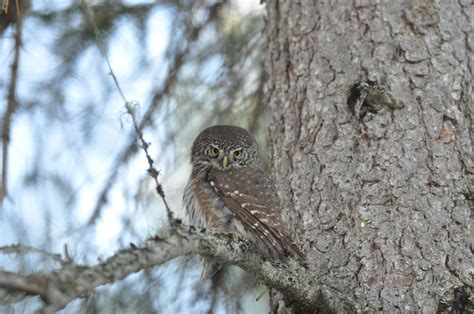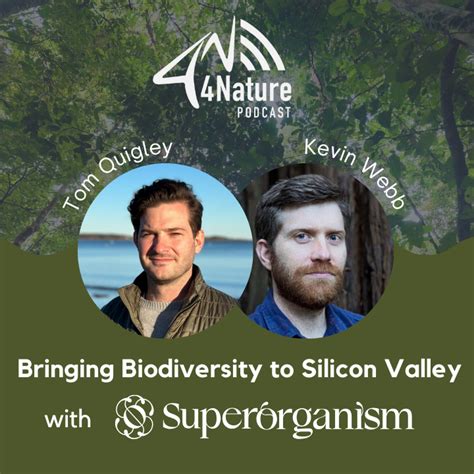
Erratic behavior in northern owl populations, including increased sightings in urban areas and southward migrations, is prompting concerns among scientists who suspect climate change as a significant contributing factor. Alterations in the owls’ traditional hunting grounds and prey availability are forcing these raptors to seek alternative food sources and habitats, leading to unusual and sometimes alarming interactions with humans.
Unusual Owl Behavior Linked to Climate Change, Scientists Warn
Scientists are raising alarms about the increasingly strange behavior exhibited by northern owl populations, suggesting that climate change is a primary driver behind these changes. An increase in sightings in urban environments, coupled with southward migrations and desperate hunts, points to a significant disruption in the owls’ natural habitats and food sources. These observations are not isolated incidents but part of a concerning trend that could have long-term implications for both owl populations and the ecosystems they inhabit.
“The owls are showing up in places they typically wouldn’t be, acting in ways that are out of character,” explains Dr. Jane Williams, an ornithologist at the Arctic Research Institute. “This isn’t just about a few lost birds; it’s a sign of a much larger problem affecting the entire Arctic and sub-Arctic environment.”
The primary concern revolves around the impact of rising temperatures on the owls’ prey, particularly small rodents like voles and lemmings. These rodents are crucial to the owls’ diet, and their populations are highly sensitive to changes in snow cover and vegetation patterns. Climate change is disrupting these patterns, leading to declines in rodent populations and, consequently, food shortages for the owls.
“What we’re seeing is a cascade effect,” Dr. Williams notes. “Warmer temperatures lead to less reliable snow cover, which affects the rodents’ breeding cycles. Fewer rodents mean less food for the owls, forcing them to venture into unfamiliar territories in search of sustenance.”
The situation is particularly dire for young owls, who are less experienced hunters and more vulnerable to starvation. As the older, more established owls struggle to find food, the younger ones face even greater challenges, leading to higher mortality rates and a potential decline in the overall owl population.
The increased presence of owls in urban areas poses additional risks. Owls are often attracted to cities by the availability of artificial light, which can help them hunt rodents. However, urban environments also present numerous dangers, including collisions with vehicles, electrocution from power lines, and exposure to toxins.
“Cities are not a natural habitat for these birds,” warns Dr. Michael Davis, a wildlife biologist with the National Wildlife Federation. “While they might find some food sources, they are also exposed to a whole host of new threats that they are not equipped to handle.”
Scientists are calling for urgent action to address climate change and protect the Arctic and sub-Arctic ecosystems that these owls depend on. This includes reducing greenhouse gas emissions, conserving and restoring natural habitats, and implementing measures to mitigate the impacts of climate change on rodent populations.
“We need to act quickly and decisively to protect these vulnerable ecosystems,” emphasizes Dr. Williams. “The fate of these owls, and many other Arctic species, depends on it.”
Furthermore, public awareness and education are crucial. People need to understand the challenges that owls face and take steps to protect them, such as driving carefully in areas where owls are present, avoiding the use of pesticides that can harm rodent populations, and supporting conservation efforts.
Specific Owl Species Affected
Several owl species are particularly affected by these changes. The snowy owl, known for its striking white plumage, is one of the most iconic Arctic owls. These birds are highly dependent on lemming populations, and their breeding success is directly linked to the availability of this prey. As lemming populations decline, snowy owls are forced to travel farther south in search of food, often ending up in urban areas where they face numerous dangers.
The great gray owl, another large and impressive species, is also struggling. These owls are adapted to hunting in dense forests, but climate change is altering these forests, making them less suitable for both the owls and their prey. Great gray owls are increasingly being found in fragmented habitats, where they are more vulnerable to predators and less able to find food.
The boreal owl, a smaller and more secretive species, is also experiencing difficulties. These owls are highly dependent on mature forests with plenty of cavities for nesting. However, logging and other forms of habitat destruction are reducing the availability of these cavities, forcing boreal owls to compete with other species for suitable nesting sites.
The Role of Citizen Science
Citizen science initiatives are playing an increasingly important role in monitoring owl populations and tracking their movements. Programs like eBird and Project Owlnet allow ordinary people to contribute valuable data on owl sightings, helping scientists to understand how owl populations are changing over time.
“Citizen science is an invaluable tool for tracking wildlife populations,” says Dr. Davis. “By engaging the public in data collection, we can gather a much larger amount of information than would be possible with traditional research methods.”
These data are used to create maps of owl distribution, track migration patterns, and identify areas where owls are facing the greatest challenges. This information can then be used to inform conservation efforts and develop strategies to protect owl populations.
Conservation Efforts
Various conservation organizations are working to protect owls and their habitats. These efforts include:
- Habitat restoration: Restoring degraded habitats to make them more suitable for owls and their prey.
- Predator control: Managing populations of predators that prey on owls.
- Education and outreach: Educating the public about the importance of owls and the threats they face.
- Advocacy: Working with policymakers to promote policies that protect owls and their habitats.
These efforts are essential for ensuring the long-term survival of owl populations. However, more needs to be done to address the underlying causes of the problem, particularly climate change.
Long-Term Implications
The changes affecting owl populations are not just a concern for bird lovers. Owls play an important role in ecosystems, helping to control rodent populations and maintain the balance of nature. If owl populations decline, it could have cascading effects on other species and ecosystems.
“Owls are an indicator species,” explains Dr. Williams. “What’s happening to them is a warning sign that something is seriously wrong with the environment. We need to pay attention to these signals and take action to address the underlying problems.”
The long-term implications of climate change for owl populations are uncertain. However, scientists are increasingly concerned that these changes could lead to significant declines in owl populations, potentially even to the point of extinction for some species.
Addressing climate change and protecting Arctic and sub-Arctic ecosystems is crucial for ensuring the long-term survival of these magnificent birds. The fate of these owls is inextricably linked to the health of the planet, and their struggles serve as a stark reminder of the urgent need for action.
Call to Action
The unusual behavior of northern owls is a clear indicator of the far-reaching impacts of climate change. By understanding the challenges these birds face, we can take steps to protect them and their habitats. This includes supporting conservation efforts, advocating for policies that address climate change, and making individual choices that reduce our carbon footprint. The future of these iconic birds, and the health of our planet, depends on it.
Expert Opinions
Leading ornithologists and wildlife biologists emphasize the urgent need to address climate change to protect owl populations. Their insights highlight the severity of the situation and the importance of proactive conservation measures.
Dr. Jane Williams: “The changes we’re seeing in owl behavior are not isolated incidents; they reflect a broader ecological crisis. Climate change is disrupting the entire Arctic food web, and owls are among the first to feel the effects.”
Dr. Michael Davis: “Urban environments pose significant risks to owls, including collisions with vehicles and exposure to toxins. It’s crucial for cities to implement strategies to mitigate these risks and protect owl populations.”
Dr. Sarah Johnson, a conservation biologist at the Wildlife Conservation Society: “Habitat restoration is essential for providing owls with the resources they need to survive. By restoring degraded habitats, we can create more suitable conditions for both owls and their prey.”
These experts underscore the importance of a multi-faceted approach to owl conservation, including addressing climate change, protecting habitats, and mitigating the risks posed by urban environments.
The Ripple Effect on Ecosystems
The decline in owl populations has far-reaching consequences for ecosystems. Owls play a crucial role in controlling rodent populations, which helps to prevent damage to crops and forests. Without owls, rodent populations can explode, leading to significant ecological and economic damage.
Furthermore, owls are an important part of the food web. They prey on rodents and other small animals, and they are themselves preyed upon by larger predators. A decline in owl populations can disrupt the balance of the food web, affecting other species and ecosystems.
The health of owl populations is therefore an indicator of the overall health of ecosystems. By monitoring owl populations, scientists can gain valuable insights into the state of the environment and identify potential threats.
The Psychological Impact of Climate Change on Wildlife Observers
The changing behavior of wildlife, particularly charismatic species like owls, can have a psychological impact on wildlife observers and researchers. Witnessing the struggles of these animals can be distressing and lead to feelings of anxiety and grief.
“It’s heartbreaking to see these magnificent birds struggling to survive,” says Dr. Williams. “As a scientist, I try to remain objective, but it’s impossible not to be affected by what I’m seeing.”
These emotional responses highlight the importance of addressing climate change not only for the sake of wildlife but also for the well-being of those who study and care for them.
Legislative and Policy Actions Needed
Effective conservation requires supportive legislative and policy actions. Governments must prioritize climate change mitigation and adaptation measures, invest in habitat restoration, and implement regulations to protect owl populations.
Specific policy recommendations include:
- Strengthening environmental regulations: Enforce stricter regulations to protect forests and other habitats from logging, development, and pollution.
- Investing in renewable energy: Promote the development and use of renewable energy sources to reduce greenhouse gas emissions.
- Implementing carbon pricing mechanisms: Implement carbon taxes or cap-and-trade systems to incentivize emissions reductions.
- Supporting research and monitoring: Fund research to better understand the impacts of climate change on owl populations and develop effective conservation strategies.
- Enhancing international cooperation: Work with other countries to address climate change and protect migratory owl populations.
These policy actions are essential for creating a sustainable future for owls and other wildlife.
Technological Solutions for Owl Conservation
Technology is playing an increasingly important role in owl conservation. Researchers are using GPS trackers to monitor owl movements, thermal cameras to detect owls in dense forests, and drones to survey owl habitats.
These technologies provide valuable data that can be used to inform conservation efforts. For example, GPS trackers can reveal the migration routes of owls, allowing conservationists to identify critical habitats that need to be protected. Thermal cameras can help researchers to locate owl nests, allowing them to monitor breeding success.
In addition, technology can be used to engage the public in owl conservation. Online platforms like eBird allow people to report owl sightings and contribute to scientific research. Social media can be used to raise awareness about owl conservation issues and encourage people to take action.
The Role of Indigenous Knowledge
Indigenous communities have a deep understanding of owl ecology and behavior, based on generations of experience living in close proximity to these birds. This knowledge can be invaluable for owl conservation.
Indigenous communities can provide insights into owl migration patterns, habitat use, and prey availability. They can also help to identify threats to owl populations and develop culturally appropriate conservation strategies.
It is essential to involve Indigenous communities in owl conservation efforts and to respect their traditional knowledge.
Public Engagement and Education Strategies
Effective public engagement and education are essential for raising awareness about owl conservation issues and encouraging people to take action.
Public engagement strategies include:
- Organizing owl walks and talks: Host guided walks and talks to educate people about owl ecology and behavior.
- Creating educational materials: Develop brochures, websites, and social media content about owl conservation.
- Partnering with schools: Offer educational programs for students to learn about owls and their habitats.
- Engaging with the media: Work with journalists to raise awareness about owl conservation issues.
These strategies can help to foster a sense of stewardship for owls and their habitats.
The Future of Owl Conservation
The future of owl conservation depends on our ability to address climate change, protect habitats, and engage the public in conservation efforts.
While the challenges are significant, there is reason for optimism. Scientists are developing new technologies and strategies to protect owls. Governments are beginning to take action to address climate change. And the public is becoming increasingly aware of the importance of owl conservation.
By working together, we can ensure that these magnificent birds continue to thrive for generations to come.
Frequently Asked Questions (FAQ)
-
What specific owl behaviors are considered “weird” or unusual?
- The unusual behaviors include increased sightings in urban areas, southward migrations outside of their typical range, hunting in unusual locations, changes in breeding patterns, and general erratic behavior potentially linked to food scarcity and habitat loss.
-
How does climate change directly affect owl prey, such as voles and lemmings?
- Climate change leads to less reliable snow cover, warmer temperatures, and altered vegetation patterns, disrupting the breeding cycles and overall populations of voles and lemmings. This, in turn, creates a food shortage for owls that rely on these rodents.
-
What are the main dangers that owls face when they venture into urban areas?
- Owls in urban areas face dangers such as collisions with vehicles, electrocution from power lines, exposure to toxins (e.g., rodenticides), and competition with other species for limited resources.
-
What specific actions can individuals take to help protect owl populations?
- Individuals can drive carefully in areas where owls are present, avoid using pesticides and rodenticides, support conservation organizations, reduce their carbon footprint, advocate for climate-friendly policies, and participate in citizen science initiatives like reporting owl sightings.
-
What role do citizen science projects play in monitoring owl populations and their behavior?
- Citizen science projects like eBird and Project Owlnet allow volunteers to report owl sightings and contribute valuable data that scientists can use to track owl distribution, migration patterns, and identify areas where owls are facing the greatest challenges, ultimately informing conservation efforts.









